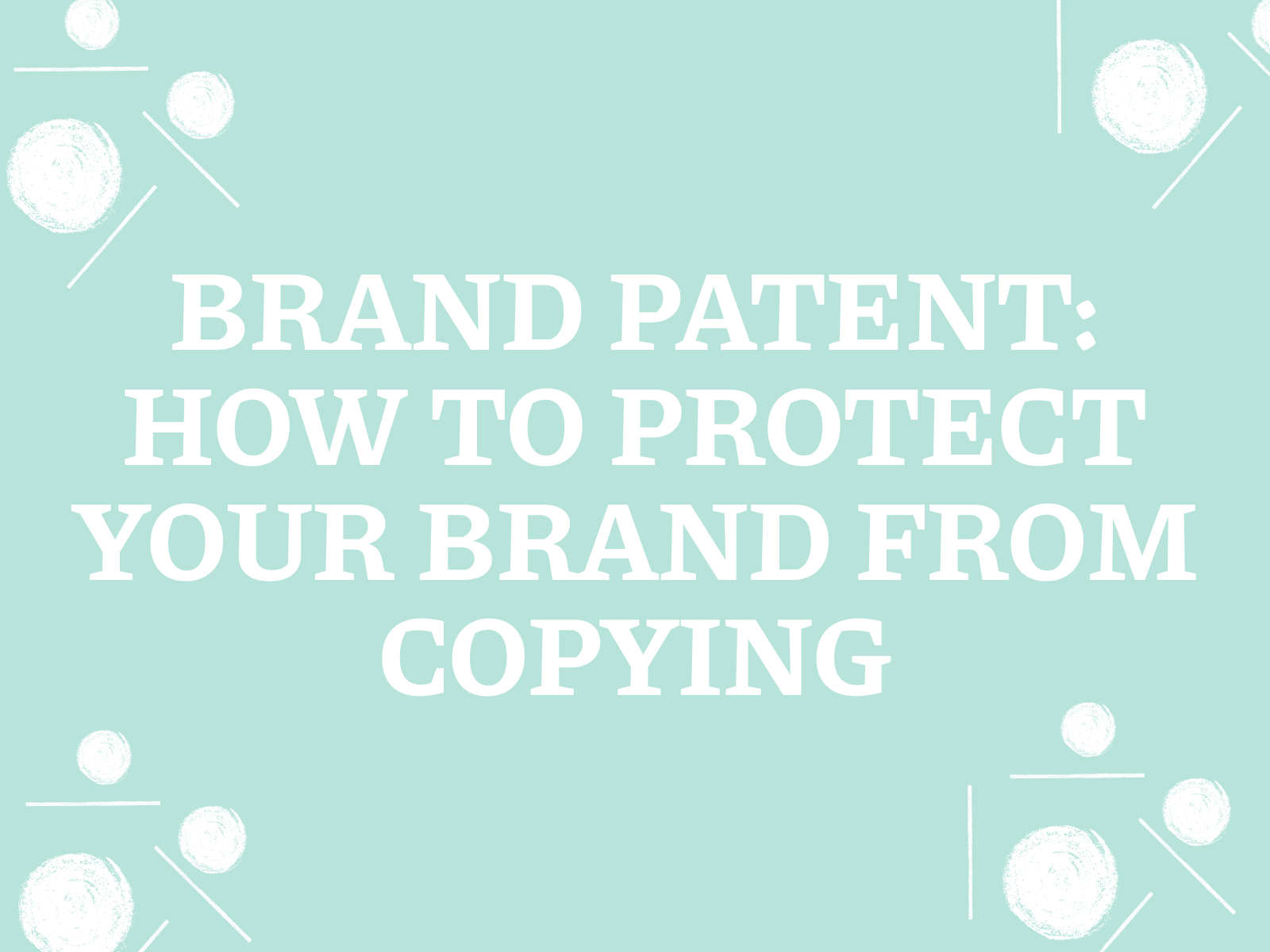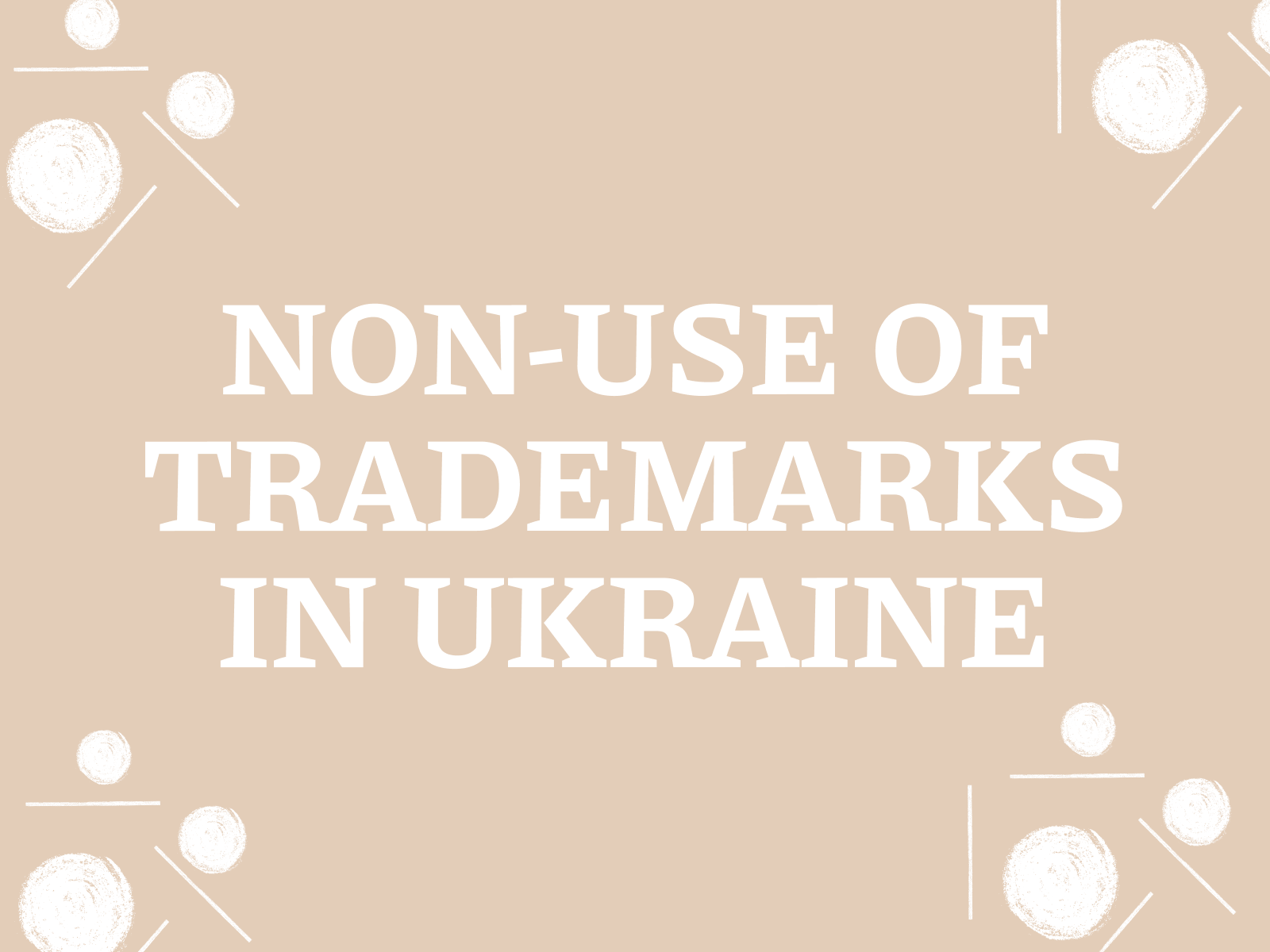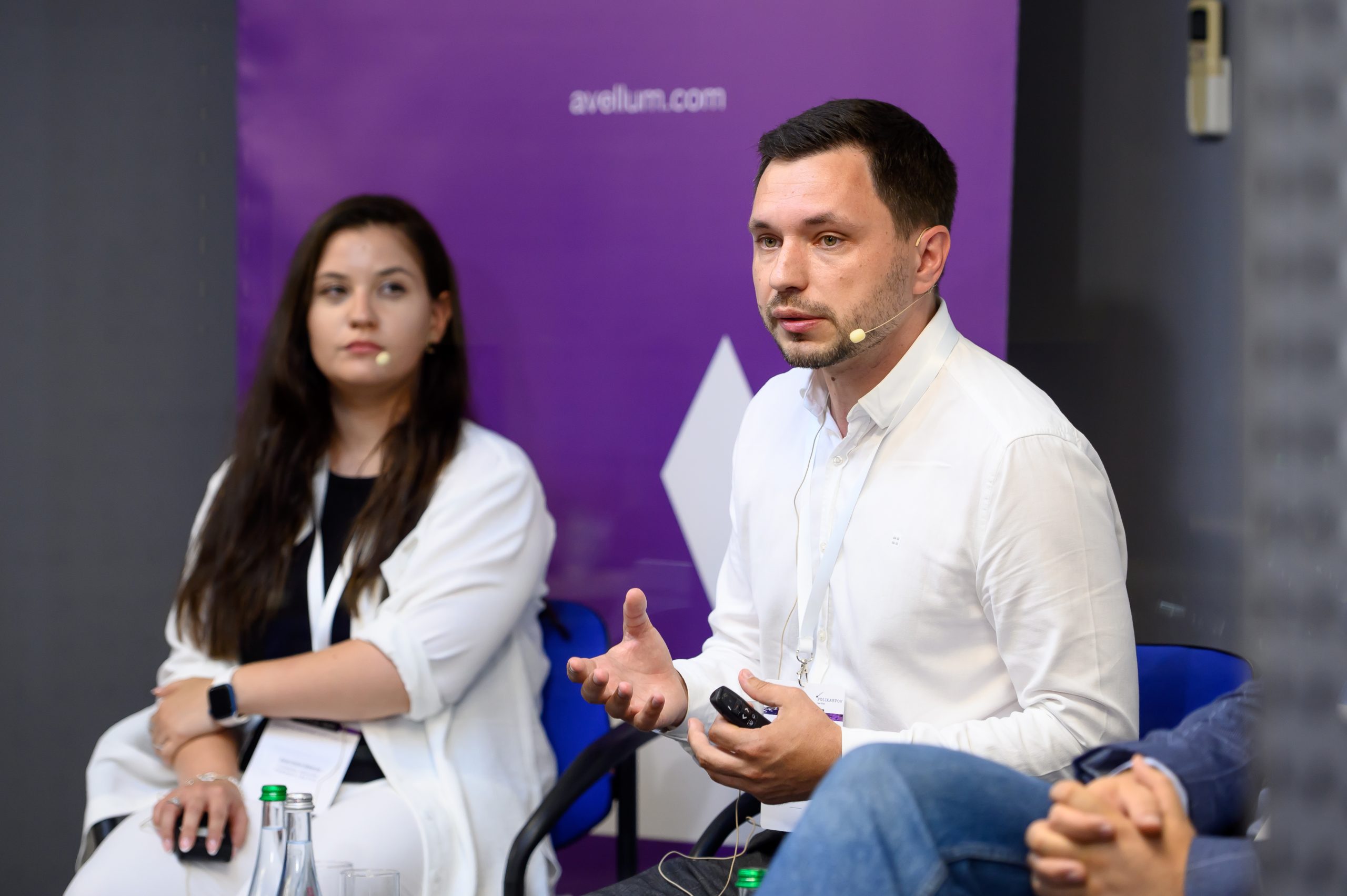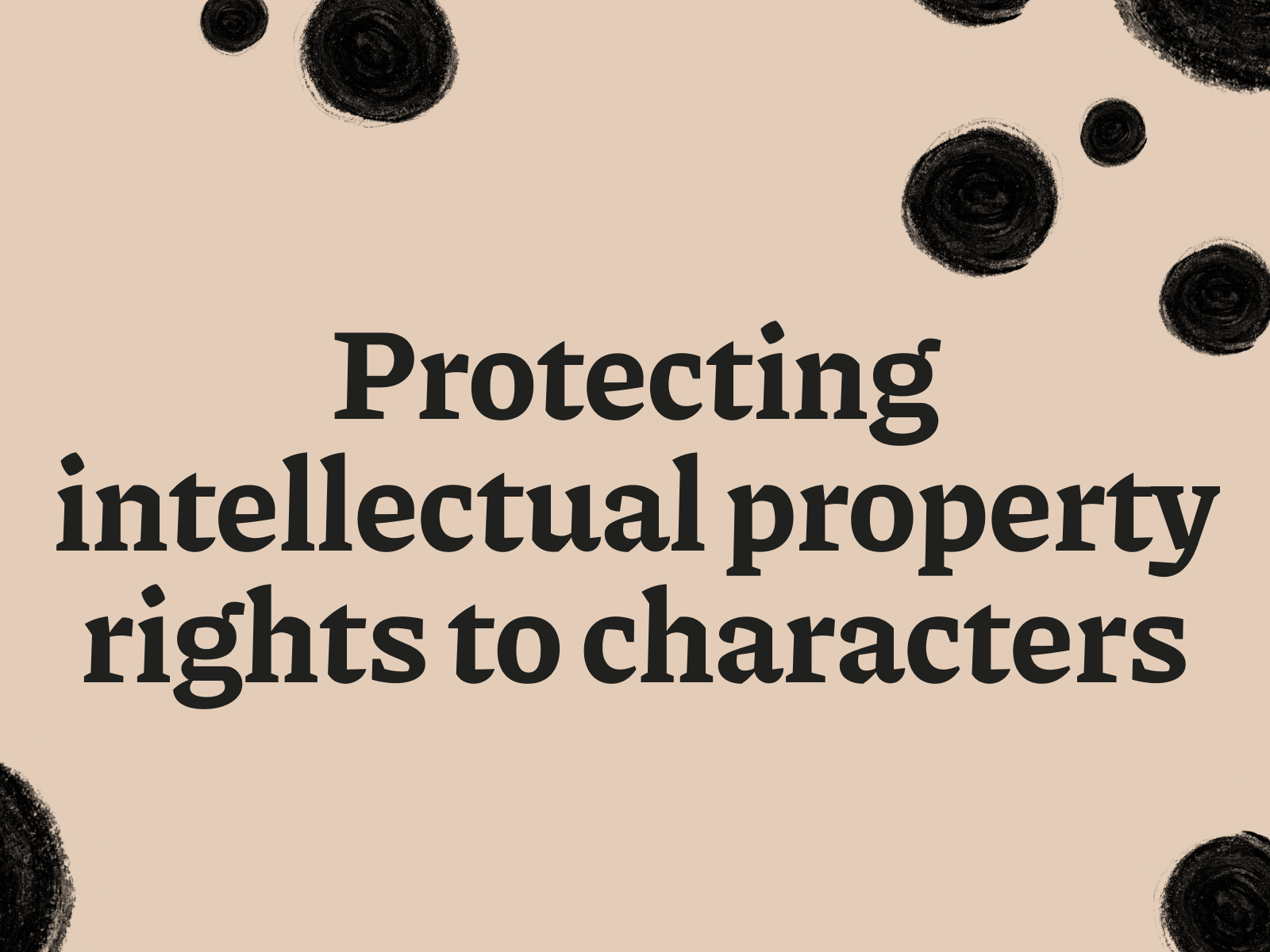Building a strong brand is a long and challenging journey. You put a lot of effort into developing a unique name, logo, style and concept to stand out in a competitive market. But what if your creativity is stolen by competitors? How to protect your brand from copying and unfair competition?
In this article, we will tell you how to protect your brand from copying by registering a trade mark in Ukraine. Although there is no such thing as a“brand patent” in Ukraine, we will look at the difference between patent rights and trade mark registration and detail the process of registering a trade mark to protect your brand.
We will then look at what a trade mark is and how registering it protects your brand.
Section 1: What is a brand patent?
Many people think that you have to get a patent to protect a brand. But is this really the case? Can your brand name, logo or slogan be patented? In this section we will look at the differences between patent rights and trade mark registration, and what elements of your brand can be protected by a trade mark.
Let’s start by looking at the differences between a patent and a trade mark.
Subsection 1.1: Patent vs. trade mark
In the world of intellectual property, the terms “patent” and“trade mark” are often perceived as synonymous, especially by people who are not specialists in the field. However, they are fundamentally different concepts that protect different aspects of intellectual activity. It is important to understand this distinction in order to choose the right method of protection for your brand. It is not possible to obtain a patent for a brand in Ukraine, as patent law governs the protection of technical solutions, not commercial names or logos.
Patent:
- The object of protection: A patent is intended to protect inventions, utility models and industrial designs. This means that a patent can be obtained for a new technical invention, for an improvement of an existing technical solution or for a new design of an industrial product.
- Term of validity: A patent grants the exclusive right to use the patented subject matter for a limited period of time, which depends on the type of patent. The maximum term of a patent in Ukraine is 20 years.
- Conditions for obtaining a patent: To obtain a patent, an invention must fulfil several criteria: novelty, inventive step and industrial applicability. This means that the invention must be new to the world, not obvious to a person skilled in the art and be capable of being used in industry.
- Object of protection: A trade mark protects designations that are used to identify and distinguish the goods and services of one manufacturer from those of other manufacturers. These can be words, images, logos, slogans, colours and other elements that are associated with your brand.
- Term of validity: A trade mark is registered for 10 years with the possibility of further renewal for the same term an unlimited number of times.
- Conditions for obtaining: To register a trade mark, it must be distinct from other trademarks registered or applied for registration in Ukraine, as well as capable of identifying the goods or services of a particular manufacturer.
Key difference: A patent protects a technical solution or design, whereas a trade mark protects the identification of a brand on the market.
Example:
- You have developed a unique mechanism for assembling furniture – you can obtain a patent for this mechanism.
- You have created a brand of furniture “Comfort House” – you can register the trade mark “Comfort House” to protect the name of your brand.
So, to protect the brand in Ukraine you need to register the following
Next, we will consider which elements of a brand can be protected as a trade mark.
Subsection 1.2: What can be protected as a trade mark?
A trade mark is a powerful tool to protect your brand. But what exactly are the elements of a brand that can be registered as a trade mark? The answer is simple: virtually any designation that can distinguish your goods or services from those of other manufacturers.
Here are some examples of elements that can be registered as
- Word marks: Your brand name, product names, slogans, unique phrases or expressions
- .Examples: “Coca-Cola”, “iPhone”, and “Just Do It”.
- Graphic symbols: Logos, emblems, symbols, pictures, labels, packaging
- .Examples: Apple logo, Mercedes-Benz emblem.
- Volumetric signs: The shape of a product or its packaging
- .Examples: The shape of a Coca-Cola bottle, the shape of a Toblerone chocolate bar.
- Sound designations: Musical fragments, jingles, sound signals
- .Examples: Nokia tune, Harley-Davidson engine roar.
- Colour designations or colour combinations: A unique colour scheme or specific colour combination associated with your brand
- .Examples: Milka’s purple, Coca-Cola’s red and white combination.
It is important to understand that not all designations can be registered as trademarks. For example, you cannot register a designation that is descriptive or generic for a particular type of goods or services. Also, designations that are contrary to public policy or the moral principles of society cannot be registered.
In order to determine whether a particular designation can be registered as a trade mark, it is recommended to contact a patent attorney.
Below we look at the process of registering a trade mark to protect a brand.
Section 2: The process of registering a trade mark for brand protection
You already know that for brand protection in Ukraine, it is necessary to register a trade mark. But how to do it, what stages do you need to go through and what documents to prepare? In this section, we will examine in detail the process of registration of trademarks in Ukraine and give you practical recommendations for the successful completion of this process.
Subsection 2.1: Searching for similar marks
Before applying to register a trade mark, it is extremely important to conduct a thorough search for similar marks. This will help you avoid unnecessary costs and frustration in the future. If your trade mark is similar to a trade mark that has already been registered or filed for registration, you may be refused registration.
What is a search for?
- Uniqueness check: The search allows you to make sure that your trade mark is unique and not similar to existing brands.
- Risk assessment: You will be able to assess the risks of potential conflicts with owners of similar brands.
- Save time and money: If you find similar marks during the search phase, you can amend your trade mark or refuse to register it, avoiding unnecessary application and review costs.
Where to conduct a search?
You can search for similar marks yourself or by contacting a patent attorney. The following resources can be used for an independent search:
- UKRNOIVI database: https://ukrpatent.org/uk/articles/bases2 – contains information about all registered and applied for registration of trade marks in Ukraine.
- International database https://www.wipo.int/branddb/en/ – allows you to search for trademarks registered in different countries of the world.
Search tips:
- Use different spellings: Check the different spellings of your trade mark, including synonyms, abbreviations and transliteration.
- Pay attention to classifications: Check for similar brands in the ICTU classes that are relevant to your business.
- Consult a specialist: If you have doubts or difficulties with your search, it is better to consult a patent attorney.
A thorough search for similar marks is an important step towards successful trademark registration. Do not neglect this step!
Next, we will look at the stage of preparing and filing a trademark application.
Subsection 2.2: Preparing and filing an application
You are convinced of the uniqueness of your trade mark and are ready to take the next step – to officially register it with UKRNOIVI (Ukrainian National Office of Intellectual Property and Innovation). This stage consists of preparing and submitting an application, which must be drawn up in accordance with the requirements of the legislation.
Required documents:
To apply for trademark registration, you will need the following documents:
- Application for registration This is the main document that contains all the necessary information about you as an applicant and your trade mark. In the application form you should specify:
- Your full details: full name or company name, address, USREOU code (for legal entities).
- Trademark image: A clear image of the trade mark in electronic or paper format that meets the UKRNOIVI requirements regarding size, quality and format.
- List of goods and services: A detailed list of goods and/or services for which you wish to register a trade mark. The list should be compiled according to the International Classification of Goods and Services (ICTU). The correct choice of the ICCT classes is extremely important as it determines the scope of protection of your trade mark.
- Statement of intention to use the trade mark: You must declare your intention to use the trade mark for the specified goods and/or services in Ukraine.
- Date of application and signature of the applicant or his representative.
- Document confirming payment of the state fee: Registration of a trade mark is a paid service. The amount of the state fee depends on the number of ICTU classes in which you wish to register your trade mark. Payment of the fee is a prerequisite for the consideration of your application. Information on the current amounts of the state fee can be found on the UKRNOIVI website.
Methods of Application:
You can apply for trade mark registration in two ways:
- Online through the electronic cabinet on the UKRNOIVI website: This is the most convenient and fastest way. You need to register an electronic account on the UKRNOIVI website and upload all the required documents in electronic format.
- In paper form by mail or in person: You can also submit a paper application by sending it by mail or delivering it in person to the UKRNOIVI office.
Link to the official UKRNOIVI website: https://uipv.gov.ua/.
Recommendations for preparing the application:
- Fill in all fields of the application carefully: Any error or inaccuracy may delay the application process or even result in the refusal of registration. Check all information several times before submitting.
- Correctly indicate the ICTU classes: The choice of ICTU classes is important for the protection of your trade mark. If you are not sure which classes to choose, it is better to consult a specialist.
- Contact a patent attorney: If you have difficulties in preparing or filing an application, it is recommended to contact a patent attorney. The specialist will help you to draw up all documents correctly and avoid mistakes.
Once the application is submitted, UKRNOIVI starts the process of its examination and issuance of the certificate, which will be described in the next subsection.
Subsection 2.3: Examination and obtaining a certificate
After filing an application for trade mark registration in UkrNIIVIVI, it passes through two main stages: examination and, in case of successful examination, issuance of a certificate.
Expertise in the application:
The examination of the application includes:
- Formal examination: At this stage, the correctness of the application and the availability of all necessary documents are checked. If errors are found, the applicant is given time to correct them.
- Qualification examination: At this stage, UKRNOIVI experts check the trade mark for compliance with legal requirements and for the presence of similar or identical marks already registered or applied for registration. If the examination reveals grounds for refusal of registration, the applicant is sent a notice with reasons for the refusal. The applicant has the right to appeal the refusal to the UKRNOIVI Appeal Chamber.
Obtaining a certificate:
If the application successfully passes the examination, UKRNOIVI decides on the registration of the trade mark and issues a certificate. The trade mark certificate is an official document that confirms your exclusive right to use the trade mark for those goods and services for which it is registered.
Terms of consideration of the application:
The general term of processing an application for registration of a trade mark in Ukraine is from 18 to 22 months.
Please note: Application processing time may vary depending on various factors, such as the complexity of the trade mark, the workload of UKRNOIVI experts and the presence of objections from third parties.
Next, we look at the benefits of brand protection by trade mark.
Section 3: The benefits of protecting a brand with a trade mark
Registering a trade mark is not just a formality, but an important strategic step for any business looking to build a strong and recognisable brand. It provides you with a number of significant benefits that will help you grow your business and protect it from unfair competition. In this section, we look at the most important benefits you get when you register a trade mark to protect your brand.
Subsection 3.1: Exclusive right to use
One of the most important advantages of registering a trade mark is the exclusive right to use it. This means that only you, as the owner of the trade mark, have the right to use it for the goods and services for which it is registered.
What does this give you?
- Copy protection: No one else can legally use an identical or similar trade mark for similar goods or services. This prevents consumer confusion and protects your reputation.
- Control over use You can decide who can use your trade mark and how. For example, you can grant licences to other companies to use your trademark or use it for franchising.
- Strengthen your market position: An exclusive right to use your trade mark allows you to strengthen your market position and differentiate yourself from your competitors.
How do I protect my exclusive right?
If you find that someone is illegally using your trade mark, you can go to court to protect your rights. The court can enjoin the infringer from using your trade mark and order the infringer to pay damages.
The exclusive right to use the trade mark is an important tool to protect and develop your brand. It gives you a competitive advantage and helps you build a strong and recognisable brand.
Next, we look at how a registered trade mark helps prevent unfair competition.
Subsection 3.2: Preventing Competition
A registered trade mark is not only a tool to identify your brand, but also an effective means of protection against unfair competition. It creates a legal barrier that makes it difficult for competitors to use your trade mark or similar signs to promote their goods or services.
How
- Prohibit the use of similar signs: You can prohibit competitors from using signs that are identical or similar to your trade mark for similar goods or services. This prevents consumer confusion and protects you from losing customers.
- Protection against counterfeits and imitations: A trade mark helps you fight counterfeits and imitations of your products. You can demand that infringers stop producing and selling counterfeit goods and seek compensation from them.
- Maintaining brand uniqueness: A trade mark ensures that your brand remains unique and recognisable in the marketplace. This allows you to maintain consumer trust and build your reputation.
What is considered unfair competition?
- Using an identical or similar trade mark for similar goods or services.
- Copying the design, packaging or other elements of your brand.
- Spreading false information about your company or your products.
- Luring your customers or employees by unfair means.
If you face unfair competition, you can go to court to protect your rights.
Defending against unfair competition is an important aspect of developing a successful business. A trade mark gives you the tools you need to fight competitors who are trying to take advantage of your reputation and brand recognition.
Next, we look at how a registered trade mark can add value to your brand.
Subsection 3.3: Enhancing Brand Value
A registered trade mark is not just legal protection, but a valuable asset that can significantly increase the value of your brand. It adds weight, prestige and credibility to your brand in the eyes of consumers, investors and partners.
How to
- Creating recognition and loyalty: A brand name helps consumers easily identify your products or services and differentiate them from competitors. This helps build recognition and loyalty to your brand.
- Quality assurance: A trade mark can become a symbol of the quality of your products or services. Consumers often associate a trade mark with a certain level of quality and reliability.
- Licensing and franchising opportunities: A registered trade mark can be a lucrative licensing or franchising opportunity. You can earn income from granting the right to use your trade mark to other companies.
- Attracting investment: Investors are more likely to invest in companies that have protected and developed brands. A brand name is a guarantee that the investment will be protected from unfair competition.
- Increased market value of the company: A strong and recognisable brand increases the market value of the company and makes it more attractive to potential customers.
Thus, trademark registration is not just an expense but an investment in the future of your business. It will help you build a strong and valuable brand that will bring you profits for many years.
Conclusion
Brand protection is an essential part of growing a successful business. It helps you stand out among your competitors, build consumer confidence and increase the value of your company. Although there is no such thing as a“brand patent” in Ukraine, you can effectively protect your brand by registering a trademark.
Key conclusions:
-
- Registration is the best way to protect your brand in Ukraine.
- A registered trade mark increases the value of your brand and makes it more attractive to investors and partners.
Recommendations:
-
-
- Prepare thoroughly for the trademark registration process.
- Search for similar brands.
- Select the correct ICTU classes.
- Contact a patent attorney for professional assistance.
-
Don’t put off protecting your brand until later. Register your trademark today and ensure a successful future for your business!
For more information on international trademark registration and trademark registration in Ukraine, we recommend you to read our articles:
Is it possible to register a unique packaging design that distinguishes a product from its analogues as a trademark?
Yes, a unique packaging design that distinguishes your product from its analogues can be registered as a trade mark in Ukraine.
However, there are some important nuances:
- Differentiation from other packaging: The design must be truly unique and clearly distinguishable from other packaging on the market. If similar design elements are already used by other brands, the registration may be rejected.
- Functional elements: You can only register as trademark decorative packaging design elements that are not functional. For example, you cannot trademark a bottle shape that is necessary for the convenient use of a product.
- ICTU classification: You must correctly identify the classes of the International Classification of Goods and Services (ICGS) that correspond to your product and packaging design.
- Image requirements: You must add to your application for registration a clear image of the packaging design that meets UKRNOIVI technical requirements.
Examples of what can be registered:
- A unique logo on the packaging.
- The colour combination of the packaging distinguishes it from its analogues.
- An original pattern or graph is used in the design.
Examples that cannot be registered:
- The shape of the bottle, is necessary for convenient use.
- Functional packaging elements such as locks, handles or protective films.
Recommendations:
- Conduct a thorough search for similar packaging before filing your application.
- Consult a patent attorney to assess your chances of successful registration.
- Draft your application carefully and check for errors before filing.
Conclusion:
Registering your packaging design as a trade mark can provide you with significant protection against copying and counterfeiting. However, it is important to understand which design elements can be registered and which cannot. Contact a patent attorney for professional advice and support in the registration process.
What if my trademark was registered by another company that does not use it? Is there any way to challenge this registration?
Finding out that your trademark has already been registered by another company that does not use it is a very unpleasant situation, but not hopeless. There are several ways to challenge such a registration.
- Checking the use:
First of all, you need to make sure that the other company is not really using the registered trademark. Pay attention to:
- Company website: Is the trademark used on the website?
- Products and packaging: Is the trademark used on products and packaging?
- Advertising and marketing: Is the trademark used in advertising campaigns?
- Challenging registration:
If you are convinced that another company is not using your registered trademark, you can challenge its registration at Ukrpatent or in court.
- Challenging at Ukrpatent: You can file an opposition to the registration of a trademark at Ukrpatent. To do so, you need to provide evidence of non-use of the trademark by another company and justification of your objections.
- Judicial appeal: If your opposition at Ukrpatent is not satisfied, you can go to court. You will need to provide evidence of non-use of the trademark and prove that its registration is unlawful.
- Proof of non-use:
An important step in opposition is to provide evidence of non-use of the trademark. Such evidence may include:
- Information from the company’s website and social media: screenshots of pages confirming the absence of trademark use.
- Advertising materials: samples of advertising materials that do not contain the trademark.
- Information on product sales: reports on product sales that do not contain the trademark.
- Witness statements: testimonies of persons confirming the absence of trademark use.
- Chances of success:
The chances of successfully challenging a registration depend on many factors, including the length of time the trademark has been unused, evidence of unused, and the specifics of the legislation.
- Recommendations:
- Consult a patent attorney: An intellectual property specialist will be able to analyze your situation and advise you on the best course of action.
- Gather all the necessary evidence: The more evidence you collect of the trademark’s non-use, the higher your chances of a successful challenge.
- Act quickly: The sooner you apply to Ukrpatent or to the court, the better your chances of winning the case.
Conclusion:
Challenging the registration of a trademark by another company that does not use it is a complicated process, but in some cases, it is possible and justified. It is important to act carefully and with the help of a specialist.
How can you protect your brand from being copied on social media, where it is impossible to register a trademark?
Although it is not possible to register a trademark directly on social media, there are many ways to protect your brand from copying and unfair practices:
- Active presence and verification:
- Create official pages: Make your social media pages as professional as possible, using unique design and content that sets you apart from your competitors.
- Verify your accounts: If possible, get a blue verification tick to confirm the authenticity of your page.
- Use hashtags: Create unique hashtags related to your brand to help users find you easily.
- Monitor and fight against copying:
- Check social media regularly: Look for pages that use your brand, logo, or name without your permission.
- Contact the social network administration: File a complaint against pages that copy your brand with evidence of the infringement.
- Use special services: Some services help you monitor social media for copying of your brand and notify you of violations.
- Protect your content:
- Use watermarks: Add watermarks to your photos, videos, and other visual content to protect them from unauthorized copying.
- Register copyright: Register copyright for your unique texts, videos, and graphics.
- Build a strong community:
- Build a strong community around your brand: Engage users in dialogue, run contests, and tell interesting stories about your brand.
- Connect with influencers: Collaborate with influencers who represent your brand’s values to grow your audience.
- Legal measures:
- Contact a lawyer or patent attorney: If you are faced with serious cases of copying, a lawyer will be able to provide you with professional advice and help you resolve the problem.
- Use of brand identity:
- Create a unique brand identity: Use specific colors, fonts, and visual elements that distinguish your brand from others.
- Promote your style: Try to maintain a consistent brand style across all your posts so that users can easily identify that it’s your page.
Conclusion:
Protecting your brand on social media requires not only legal protection but also a proactive promotion, user relations, and copyright strategy. Contact a patent attorney or lawyer for professional advice and assistance in dealing with social media copying issues.
Do I need to register a trademark if I sell goods only online?
Yes, you need to register a trademark even if you only sell goods online.
Here’s why:
- Protecting your intellectual property: Registering a trademark gives you the exclusive right to use your brand in Ukraine. This means that no one else can use your brand without your permission, even in the online world.
- Copy protection: In the online world, it is quite easy to copy product designs, photos, texts and other elements of your brand. Registering a trademark will allow you to protect your brand from unfair competition and prevent competitors from using your creative solutions.
- Building reputation and trust: A registered trademark adds legitimacy and trust to your online business. Consumers often perceive registered trademarks as a sign of quality and reliability.
- Opportunity for business expansion: If you plan to expand your business in the future and enter the offline market, a registered trademark will be essential.
Conclusion:
Trademark registration is an important investment in the development of any business, including online businesses. It protects your creative solutions, strengthens your reputation, and creates a solid foundation for the successful development of your online business.
Contact a patent attorney to get professional advice on registering a trademark for your online business.
What are the alternative ways to protect a brand other than trademark registration?
Although trademark registration is the most effective way to protect a brand, there are other alternative ways that may be useful in certain cases:
- Copyright:
- Protecting your unique content: Copyright protects your original works, such as texts, videos, photographs, music, and graphic design. This can be useful for protecting your branded content, such as unique product photos, promotional videos, or branded illustrations.
- Registration is required: In Ukraine, registration is not required to obtain copyright, as copyright arises automatically after the creation of a work. However, registration will make it easier for you to prove your rights in court.
- Limitations: Copyright does not protect a brand name, logo, or other elements that can be registered as a trademark.
- Domain names:
- Protecting your online space: Registering a domain name that contains your brand name or a variation of it will help protect your online space from unscrupulous competitors.
- Restrictions: A domain name only protects your online space, not the brand as a whole. It does not prevent other companies from using your brand name in the offline world or in other online channels.
- Legal assistance:
- Expert advice: Consult a patent attorney or lawyer to assess your chances of successfully protecting your brand through alternative means.
- Legal assistance: A lawyer can help you develop an effective strategy to protect your brand from copying and unfair competition.
- Advanced marketing strategy:
- Build a strong reputation: Engage users in dialogue, create engaging content, connect with influencers, and build a strong community around your brand.
- Brand Recognition: A registered trademark is not the only way to create a recognizable brand. Active marketing, the development of a unique style, and market positioning will also help you succeed.
Conclusion:
Registering a trademark provides the best protection for your brand. However, there are other alternative methods that may complement your protection strategy or prove useful in certain situations. It is always recommended that you contact a patent attorney or lawyer for professional advice and to develop an effective strategy for protecting your brand.






